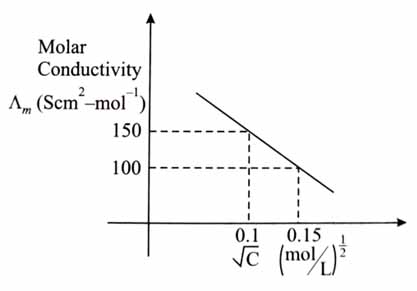Topic Question Set
Q 11
:
Given below is the plot of the molar conductivity vs for KCl in aqueous solution.

If, for the higher concentration of KCl solution, the resistance of the conductivity cell is 100 , then the resistance of the same cell with the dilute solution is .
The value of is ______ (Nearest integer) [2025]

(150)
...(i)
...(ii)
Q 12
:
0.2% (w/v) solution of NaOH is measured to have resistivity 870.0 m m. The molar conductivity of the solution will be ______ mS . (Nearest integer) [2025]
(23)
Q 13
:
The molar conductance of an infinitely dilute solution of ammonium chloride was found to be 185 S and the ionic conductance of hydroxyl and chloride ions are 170 and 70 S , respectively. If molar conductance of 0.02 M solution of ammonium hydroxide is 85.5 S , its degree of dissociation is given by .
The value of is _____. (Nearest integer) [2025]
(3)
By Kohlrausch law:

